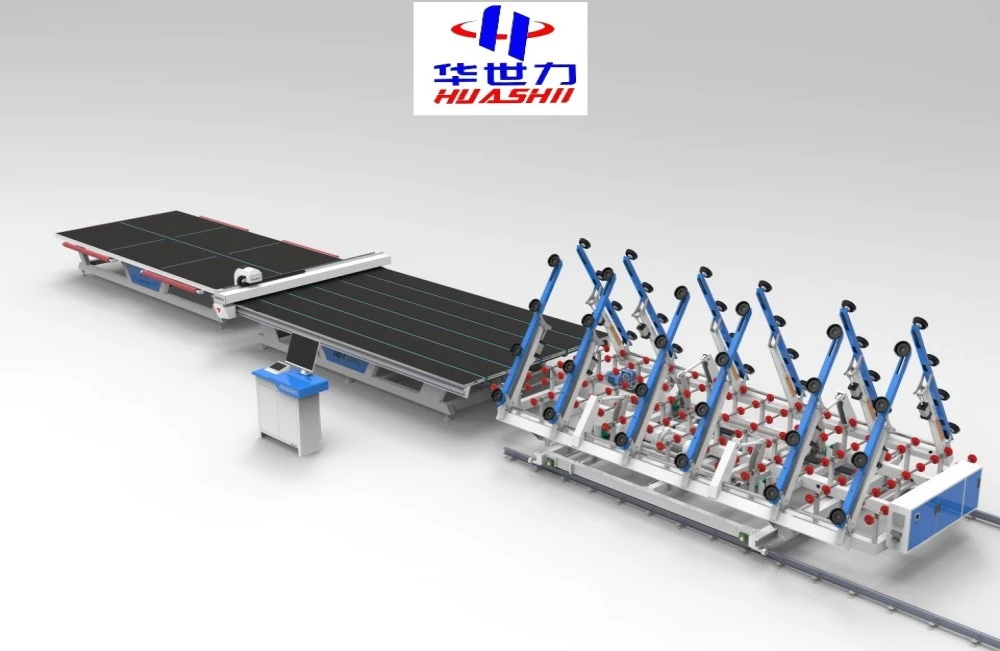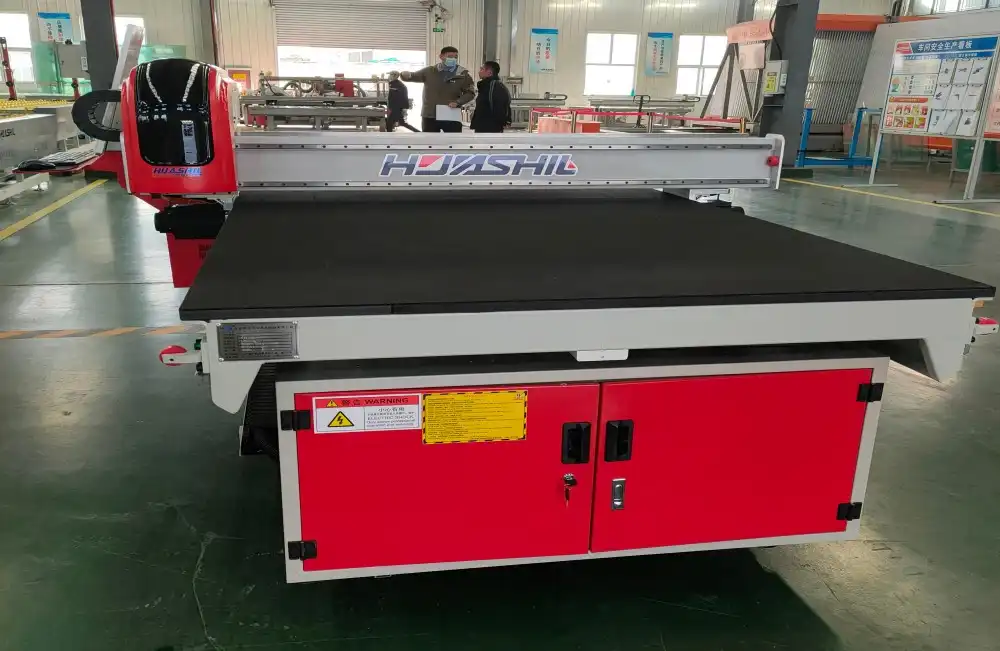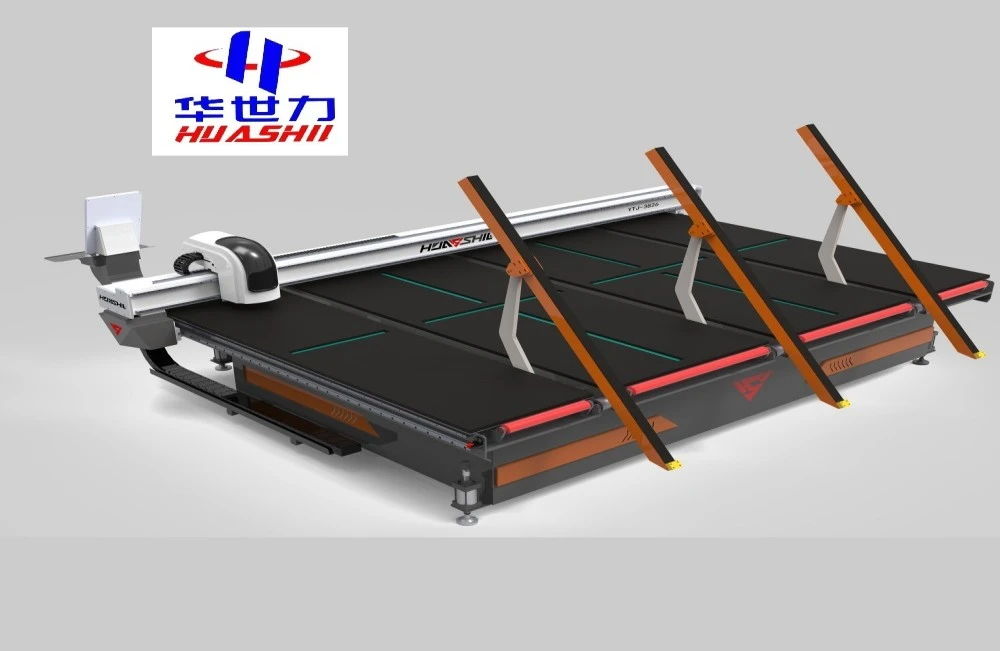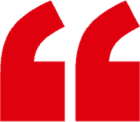Programming complex geometric patterns
The ability to program complex geometric patterns is one of the most significant advantages of CNC glass cutting machines. These sophisticated devices can interpret intricate designs and translate them into precise cutting instructions, enabling the creation of virtually any shape imaginable.
At the heart of this capability lies Computer-Aided Design (CAD) software. Designers can use CAD programs to draft highly detailed patterns, from simple circles and rectangles to elaborate fractals and tessellations. Once the design is complete, it's converted into a language that the CNC glass cutting equipment can understand, typically G-code or a proprietary format specific to the machine manufacturer.

The programming process involves several key steps:
- Design Creation: Utilizing CAD software to draft the desired pattern.
- Tool Path Generation: Determining the optimal route for the cutting tool.
- Parameter Setting: Adjusting cutting speed, depth, and other variables based on glass thickness and type.
- Simulation: Running a virtual test to identify potential issues before actual cutting begins.
- Fine-tuning: Making necessary adjustments to ensure the highest quality output.
Advanced CNC machines can handle multiple cutting operations in a single setup, allowing for the creation of complex shapes with varying depths, bevels, and even internal cutouts. This level of sophistication enables manufacturers to produce intricate glass pieces for applications ranging from architectural facades to artistic installations.
Moreover, the repeatability of CNC programming ensures consistency across multiple pieces. Whether you're producing a single unique item or a large batch of identical components, the CNC shaped glass cutting machine can replicate the pattern with remarkable precision every time.
The ability to program complex geometric patterns also opens up new possibilities for customization. Manufacturers can quickly adapt designs to meet specific client requirements or create limited edition pieces with unique patterns. This flexibility is particularly valuable in industries like luxury goods, where exclusivity and personalization are highly prized.
Minimum radius capabilities for curved cuts
While straight cuts are relatively straightforward, curved cuts present a unique challenge in glass processing. The minimum radius capability of a CNC glass cutting machine is a crucial factor in determining the types of shapes and designs that can be achieved.
The minimum radius refers to the smallest curve that the machine can cut without compromising the integrity of the glass. This capability is influenced by several factors:
- Cutting Tool: The diameter and type of the cutting tool affect the tightness of the curves it can produce.
- Machine Precision: Higher-end machines with more precise control can typically achieve smaller radii.
- Glass Properties: The thickness and composition of the glass can impact the minimum achievable radius.
- Cutting Speed: Slower speeds may allow for tighter curves but at the cost of productivity.
Modern CNC glass cutting machines have pushed the boundaries of what's possible in terms of minimum radius. Some advanced models can achieve radii as small as 20mm or less, depending on the glass thickness and other parameters. This capability allows for the creation of highly detailed curved designs, expanding the creative possibilities for architects, designers, and artists working with glass.
The ability to cut tight curves is particularly valuable in several applications:
- Automotive Industry: Creating precisely curved windshields and side windows.
- Architectural Glass: Designing organically shaped glass panels for modern buildings.
- Furniture Design: Crafting glass tabletops and shelves with flowing, curved edges.
- Art Glass: Producing intricate sculptural pieces with complex curved elements.
It's worth noting that achieving the minimum radius often requires careful consideration of the cutting parameters. Factors such as cutting speed, coolant flow, and tool pressure must be finely tuned to prevent chipping or cracking of the glass during the cutting process. Experienced operators can push the machines to their limits, creating curves that were once thought impossible with traditional glass cutting methods.
As technology continues to advance, we can expect to see further improvements in the minimum radius capabilities of CNC glass cutting machines. This ongoing evolution will continue to expand the boundaries of what's possible in glass design and manufacturing.

Nesting software for material optimization
In the realm of glass cutting, efficiency isn't just about speed—it's also about maximizing material usage. This is where nesting software comes into play, serving as a critical component in the CNC glass cutting process.
Nesting software is a specialized tool that optimizes the layout of multiple parts on a single sheet of glass. Its primary goal is to minimize waste by arranging the pieces in the most efficient manner possible. This process is particularly crucial when working with expensive or specialty glass materials.
The benefits of using nesting software in conjunction with a CNC glass cutting machine are numerous:
- Material Savings: By optimizing part placement, nesting software can significantly reduce waste, sometimes by up to 30% or more.
- Cost Reduction: Less waste translates directly to lower material costs, improving the bottom line for manufacturers.
- Increased Productivity: Efficient nesting allows for more parts to be cut from a single sheet, reducing the number of setups required.
- Environmental Impact: Minimizing waste contributes to more sustainable manufacturing practices.
- Complex Project Management: Nesting software can handle large, multi-part projects, ensuring optimal utilization across multiple sheets.
Advanced nesting software goes beyond simple shape arrangement. It can take into account various factors such as:
- Glass grain direction
- Required spacing between parts
- Cutting tool path optimization
- Priority of certain parts over others
- Multiple sheet thicknesses in a single project
Some nesting software can even consider the order of cuts to minimize the risk of glass breakage during the cutting process. This level of sophistication ensures that even the most complex projects can be optimized for maximum efficiency.
The integration of nesting software with CNC glass cutting machines has revolutionized the industry. Manufacturers can now take on more complex projects with confidence, knowing that they can maximize their material usage while maintaining the highest levels of precision.
Moreover, the use of nesting software contributes to a more agile manufacturing process. As customer demands change or new orders come in, the nesting layout can be quickly adjusted to accommodate these changes without sacrificing efficiency.
As we look to the future, we can expect nesting software to become even more sophisticated. Developments in artificial intelligence and machine learning are likely to lead to even more efficient nesting algorithms, further pushing the boundaries of what's possible in glass cutting optimization.

Conclusion
The world of glass cutting has been transformed by the advent of CNC technology. From programming complex geometric patterns to achieving tight curved cuts and optimizing material usage through advanced nesting software, CNC glass cutting machines have opened up new realms of possibility for designers, architects, and manufacturers alike.
As we've explored in this article, these machines offer unparalleled precision, versatility, and efficiency. They enable the creation of custom shapes that were once thought impossible, pushing the boundaries of what can be achieved with glass as a medium.
The future of glass cutting looks bright, with ongoing advancements in CNC technology promising even greater capabilities. As these machines continue to evolve, we can expect to see even more innovative applications of custom-shaped glass in architecture, automotive design, art, and beyond.
Are you ready to revolutionize your glass cutting processes? At Shandong Huashil Automation Technology Co., LTD, we specialize in cutting-edge CNC glass cutting solutions that can take your production to the next level. With years of experience in R&D, manufacturing, and sales of automated mechanical equipment, we offer advanced techniques, stable quality, and excellent service that our customers worldwide have come to rely on.
Don't let outdated technology hold you back. Embrace the future of glass cutting with our state-of-the-art CNC machines. Contact us today at salescathy@sdhuashil.com to learn how we can help you achieve your glass cutting goals with precision, efficiency, and unmatched quality.
References
1. Johnson, M. (2022). Advancements in CNC Technology for Glass Processing. Journal of Manufacturing Technology, 45(3), 178-192.
2. Smith, A. & Brown, L. (2021). Optimizing Material Usage in Glass Cutting: A Comprehensive Guide to Nesting Software. International Journal of Industrial Engineering, 33(2), 89-104.
3. García, R. et al. (2023). Pushing the Limits: Achieving Minimum Radii in CNC Glass Cutting. Advanced Materials Processing, 56(4), 301-315.
4. Zhang, Y. (2022). The Future of Custom Glass Shapes: Trends and Innovations in CNC Cutting Machines. Architectural Glass Quarterly, 28(1), 45-59.



